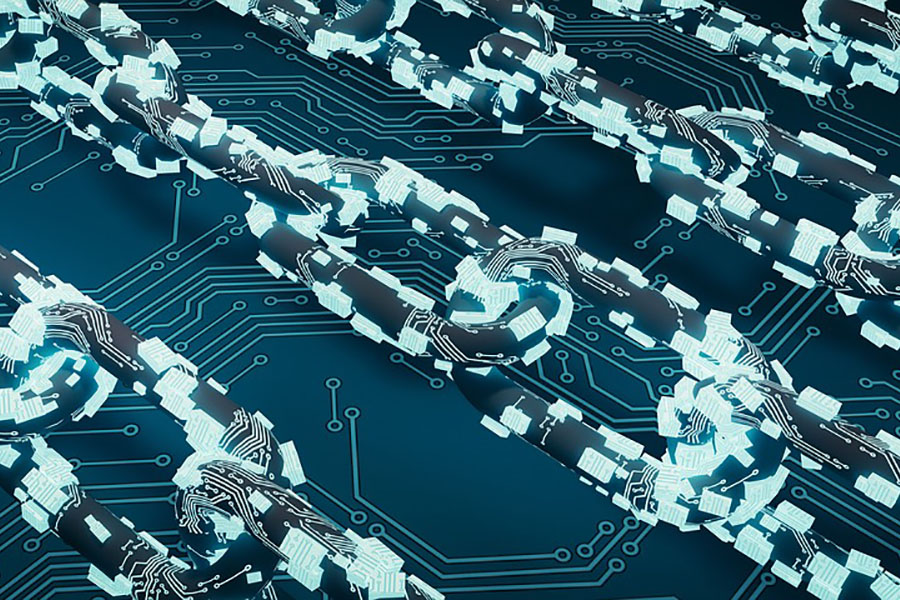"Digital transformation is well under way with over a third of businesses already implementing digitalization programs, representing a 30% increase over last year. "
Digital transformation is here and it is disrupting HR functions in various ways. Learn about the latest digital transformation trends emerging in 2019.
The digital transformation is well under way with over a third (34%) of businesses already implementing digitalization programs, representing a 30% increase over last year. Meanwhile, two-thirds of global CEOs report they will embrace a digital-first focus by the end of 2019.
In recent years, digitalization has profoundly enhanced the customer experience to drive more value for brands. But digital transformation is transcending the customer experience to impact the employer experience as well. Employees, who have become accustomed to the digital experience in their personal lives, are increasingly expecting to have a digital relationship with their employers as well. This shift has implications across the human resources function, including recruitment, onboarding, training, L&D, and more.
The following digital transformation trends and new technologies are disrupting the business model for companies of all sizes, across various industries. But these innovations also represent unprecedented opportunities for HR leaders to improve the employee experience and better adapt for the future of work.
1. Blockchain adoption is increasing.
While just 0.5% of the global population is currently using blockchain technology, its popularity is rising and it is projected that 80% of the population will be engaged with blockchain technology in some capacity within 10 years.
Blockchain technology is perhaps best known for its role in safeguarding the cryptocurrency infrastructure (e.g. Bitcoin)—but ledger technology is leaving the cryptocurrency nest to explore more business opportunities. As the technology matures, companies across various industries are reporting compelling use cases for blockchain. For example, banks can now reduce infrastructure cost by 30% through blockchain solutions. This is achieved by encrypting millions of storage points, none of which contain a full name or an account number.
Because the HR department is the guardian of so much data that is critical to employees’ lives and how a company operates, the human resources space is welcoming blockchain for cybersecurity reasons. Ledger technology will likely be integrated directly into the HR function through a multitude of use cases—lending transparency and trust to an organization’s operations.
Despite current challenges in cost and scalability, the case for blockchain HR is strong. To prepare for the coming blockchain revolution, HR departments should focus on identifying pain points and inefficient processes that could be improved by the transparency, accuracy and speed that blockchain facilitates
The processes most suitable for blockchain disruption are those that are burdensome and expensive with substantial data collection and third-party verification. For this reason, healthcare and benefits could be the ideal starting point for an HR department looking to adopt blockchain technology. The healthcare industry has been identified as one of the top industries likely to be disrupted by blockchain and, according to Bitfortune, 55% of healthcare applications will adopt blockchain platforms for commercial deployment by 2025. HR departments will therefore need to keep a strong pulse on how blockchain is impacting the healthcare landscape so they can continue delivering healthcare plans and wellness programs to employees.
As blockchain technology becomes more mainstream and accessible, it is possible that many processes of daily workflow will transform: recruitment, tapping talent pools, running background checks, verifying employment history, engaging contract workers with smart contracts, onboarding, maintaining employee data, maintaining employees’ personal data, handling financial transactions and managing payroll systems.
2. Businesses are investing in cloud platforms.
Cloud computing and its various functions have been a hot topic for the human resources industry. It is not a relatively new technology but still the forecast is calling for more clouds. By 2020, a staggering 83% of global enterprise workloads will be stored on the cloud.
For the HR space, cloud’s success is owed to its acclaimed ability to organize data, centralize processes, scout high-quality talent and boost performance. But most importantly, cloud computing lends transparency to an organization’s processes and can subsequently enhance the employee experience, from the recruitment process all the way through to L&D and exit interviewing.
The traditional recruitment process can be rather tedious, requiring the company to advertise the position, shortlist candidates and conduct interviews. Cloud computing streamlines at least some of the process, offering everyone in the department immediate access to the data about a candidate. Feedback can be shared and decisions can be made using cloud software, all with the click of a button.
The implementation of a multicloud ecosystem can also automate several HR processes for employees that include large amounts of data such as timesheet submission, performance reviews and vacation requests. Employees can take ownership of their employee data forms through the cloud, including tax information and emergency contacts. Many companies are also using public clouds to automate employee signatures on various documents, such as employee handbooks, sexual harassment training, L&D, webinars, etc. Performance reviews are also being managed on the cloud, offering employees better access and insight.
Automatic software updates are another benefit of the cloud and these can simplify compliance. The HR department is often required to generate several comprehensive reports at specific intervals of time. Paperwork, time and hassle can be reduced by having the cloud software’s process automation generate these reports instead.
Cloud computing technology is inherently developed with security woven into its DNA. By replacing physical filing cabinets, data can be protected from theft or natural disasters. For example, if a company’s office were to become inaccessible due to flooding, employees would still have remote access to the programs they work with on a daily basis. Furthermore, data would be protected.
3. Conversational User Interface (UI) & chatbot experiences are improving.
According to Gartner, by 2021 more than 50% of enterprises will spend more per annum on bots and chatbot creation than traditional mobile app development. And, as other conversational UIs improve on voice recognition and reasoning frameworks, their understanding of the user’s needs and wants will also grow.
HR departments are engaging chatbots and other conversational UIs to streamline processes and eliminate redundancies. These technologies can provide employees with immediate and consistent answers to commonly asked questions related to holiday leave, compensation, benefits, company policies and legal rights. Even some aspects of recruitment, employee reviews, onboarding, benefits and L&D can be assisted by chatbots and other conversational UI.
Nudge-based technology is being implemented in tandem with conversational UI to suggest behaviors for employees and subsequently improve workflow. For example, a software program can monitor employee activity at a computer workstation and, after a certain amount of time, send a message to the employee that it might be time to take a break. Nudge-based technologies can also be used in lieu of repetitive communication from the HR department. Automatic reminders can even be sent to managers to fill out performance evaluations, with conversational UI then stepping in to assist with that process.
As self-service platforms, the conversational UIs free up time for both employees and employers while still delivering the right information at the right time. This HR technology also allows the team to focus on more urgent questions and complex issues that require special attention.
4. Data & people analytics continue to be important.
Information as a critical business asset is still in the infancy phase, making it a competitive differentiator for companies as they transition to the digital age. For leading companies, big data and analytics are becoming strategic priorities and key drivers for digital transformation initiatives.
While fewer than 50% of documented corporate strategies currently cite data and analytics as fundamental elements for enterprise growth, Gartner predicts that this number will jump to 90% in 2022.
The importance of a . data-driven culture is being especially emphasized in the world of work. For years, people analytics was mired in complexity. But today it is being leveraged as a critical people management instrument that can be applied at every level of the HR function, ranging from the recruiting process all the way to talent development and exit interviewing.
For recruitment, people analytics can increase the chances of finding the right people for the right jobs. It can also be useful for building employee engagement and satisfaction, as it cultivates data about employees’ attitudes and moods. People analytics can also facilitate collaboration within an organization, providing insights about how well certain people and groups work together.
When it comes to performance management, people analytics helps eliminate the human bias that often comes with manual evaluations. It also allows for an evaluation of both the process and outcome, which can help HR teams distinguish variables (such as luck or coincidence) from real, applicable skills that an employee has.
It’s important to note that people analytics is more than just data—it can be translated to guiding insight. With new analytics capabilities, HR teams are unearthing deep insights into the company’s organizational health. In turn, this insight can be used as a basis for proactive programming and support. Overall, people analytics helps cultivate a digital culture where decisions are informed by data.
5. Internet of Things (IoT) adoption is accelerating.
As digital transformation progresses, we are connecting more devices to the internet at home, at work and on our person. Thus, the market for the Internet of Things (IoT) is flourishing.
For HR, the starting line for IoT integration is usually with mobile smartphones and tablets—central hubs in IoT. In our personal lives, these devices offer centralized, easy access to our personal data and allow us to carry about a lot of our business. For example, we can share our thoughts on social media, communicate with friends via SMS and even buy products on our mobile devices.
Employees are increasingly expecting to migrate their work onto mobile devices, demanding access to data, analytics and communication. This helps employees and employers alike by enabling continuous performance management and a flexible workplace where employees can be productive no matter where they are.
Employers have leveraged IoT to drive health and wellness initiatives. As companies recognize that healthy people perform better and are more engaged, they are taking measures to help encourage wellness and offering employees devices like smart watches, heart rhythm trackers and similar devices. These fitness trackers are not intended to track where employees are but how they are.
IoT can be being leveraged by companies to enhance employee engagement and improve productivity. But as IoT in HR advances, companies are also delving into the data provided by user devices. If gathered collectively, the cumulative data becomes a great source of information for the company.
6. Artificial intelligence & machine learning applications continue to increase.
Artificial intelligence (AI) and HR may seem incompatible at first—it is ‘human’ resources after all—but the HR department is increasingly steered by non-human capabilities. A slight majority (51%) of companies have already deployed AI and machine learning and there are a variety of trending use cases for HR.
With AI, employers are in a position to greatly improve the assessment of candidates. For starters, a notable feature of AI is its potential to mitigate the effects of unconscious bias in the hiring process. With AI, candidates are sourced, screened and filtered through large quantities of data. The programs combine data points and use algorithms to identify who will likely be the best candidate. These data points are looked at objectively, completely removing the biases, assumptions and oversight that humans are susceptible to.
Virtual reality (VR), by placing candidates directly into in virtual situations, can potentially provide more insight about a candidate than what is written on their resume or what they say in an interview. This can reveal candidates’ capabilities as decision makers and lead to assessment based on behavior and action rather than words.
Meanwhile, machine learning tools can help with recruitment by tracking a candidate’s journey throughout the interview process. HR tools can calculate a holistic score for new talent, drawing data derived from digital screening and online interview results. This score system can help hiring managers objectively arrive at decisions based on data.
On the opposite end of the interview table, machine learning tools can also help deliver streamlined feedback to applicants much faster and objectively than manual methods can.
Augmented reality (AR) could be implemented to transform the employee onboarding experience into something fun and interactive. Employees might start the job with an AR tour of the office where information about key locations, company history and colleagues pops into view as they move around.
Machine learning also has implications for employee retention. HR is charged with courting top talent so they stay with the company and this often involves identifying risk attrition. Through advanced pattern recognition, machine learning draws from an array of variables to recognize attrition risks and patterns in a company’s workforce. These pertinent variables can include years at company, satisfaction rates from surveys, education, department, time at company, training times, time since last promotion, attendance, etc. Once an employee is identified for possible attrition, the HR department can act accordingly.
When it comes to assessment and development, L&D programs can be boosted by machine learning to identify high-potential employees with the skills and qualifications the company needs. Notably, it has been found that the employees ranked highest by the machine learning software aren’t usually those on the promotion track. Instead these high potential employees may be overlooked by traditional methods of assessment.
7. The rise of headless architecture.
In today’s competitive, customer-centric business environment, the race is on for organizations to deliver innovative, personalized customer experiences across various platform. This omnichannel movement is impacting digital content publication and giving rise to “headless architecture” in website design.
In traditional approaches to digital publishing, the front-end and back-end are tightly bound to each other. But in the headless model, they are decoupled and instead communicate through an application programming interface (API). With just one back-end in place, multiple front-end delivery systems can be developed to seamlessly publish the content on various channels such as desktop, mobile and IoT devices.
Headless offers more flexibility and choice, allowing companies to choose the front-end framework that makes sense for them. Furthermore, because the headless architecture model keeps the back-end and front-end separated, companies can easily upgrade and customize digital assets without compromising the website’s performance. Digital assets can accumulate as the company grows.
By offering the freedom to innovate, headless architecture can help companies reinvent user experiences as needed. This also helps to future proof their websites because they can revamp the design without replacing the entire content management system. It allows them to migrate existing content already on the platform and integrate it with new tools and frameworks as they emerge.
As the voice for human capital, amid a rapidly evolving workforce, HR plays a critical role in guiding a company’s digital transformation journey. After all, effectively integrating new digital technology requires the right people in the right positions. Despite disruptions from AI and automation, the world of work remains people-centric at its core.
As employees continue to demand a more experiential and omnichannel approach to work, HR teams must be deeply involved in a company’s digital transformation strategy. Keeping pace with digital trends will help HR do what it does best: merge the best in human skills with state-of-the-art digitalization to create a vibrant, enriching workplace.










